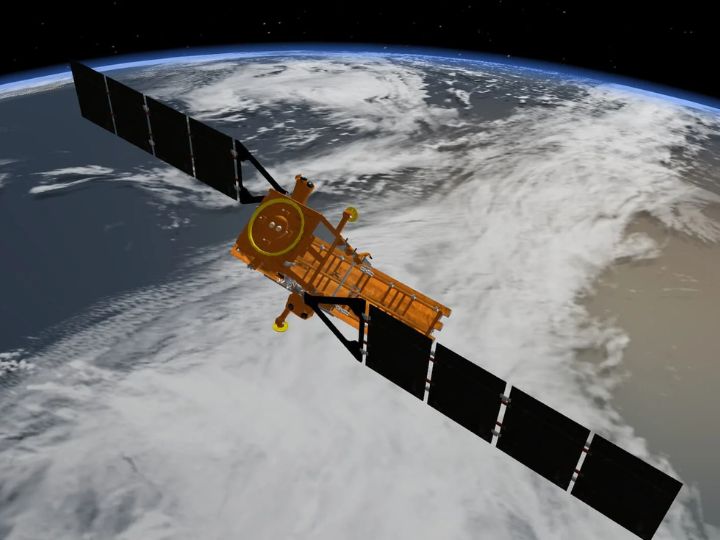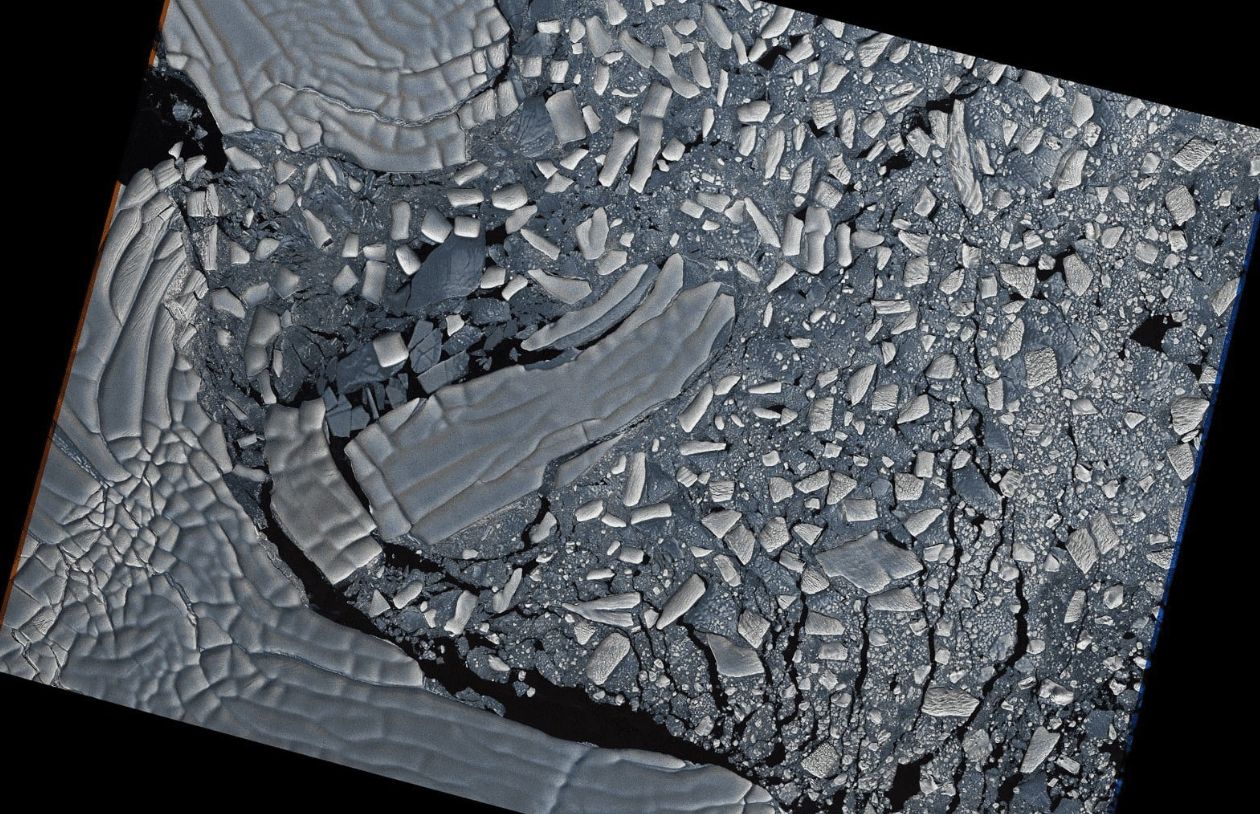COSMO-SkyMed image of Pine Island Glacier in Antarctica, which clearly shows icebergs of considerable size (the one in the center of the image is almost 9.5 miles) breaking away from the ice shelf formed by the flow of ice into the sea. Photo courtesy Italian Space Agency
A University of Houston scientist has teamed with international partners to examine how Antarctica’s massive glaciers are shifting and how that could predict sea level changes. Their latest collaboration offers the most precise mapping to date in Antarctica of grounding lines, the points where glaciers lift from bedrock and begin to float on the ocean.
On earth today, only two ice sheets, or continental glaciers, exist — one in Antarctica and the other in Greenland. Over thousands of years of snow compacting and compressing, the ice sheets formed and now cover most of the land in those areas.
About five years ago, the Italian Space Agency began examining Antarctica’s glaciers during its dedicated COSMO-SkyMed mission, meant to observe the earth using its constellation of four synthetic aperture radar satellites, first launched 17 years ago.
And now, after transcription and interpretation, these observations reveal tidal movements and retreat rates in Antarctica of up to 700 meters — or about a half mile — per year in some regions, providing an unprecedented view of glacier evolution.
Antarctica is a significant contributor to global sea level rise, with the potential to substantially increase sea level by the end of this century.
It seems a simple math problem: If the grounding line is measured as having moved inland, where glacier thickness increases, then more ice is flowing outland — or into the ocean. And the more ice into the ocean, means higher sea levels. And vice versa.
“Continuous monitoring of Antarctic evolution is important to understand ice sheet dynamics, minimizing uncertainties in sea level rise projections, and develop strategies to mitigate the risks posed by rising sea level,” said Pietro Milillo, assistant professor of civil and environmental engineering.
“This dataset provides the most detailed view yet of how Antarctica’s glaciers are interacting with the ocean. For the first time, we can monitor fast-flowing glaciers at a continental scale using high-frequency radar observations.” Milillo and the Italian Space Agency published their findings in Scientific Data, a Nature publication.


The paper presents an Antarctic grounding line dataset, manually mapped using Differential Interferometric Synthetic Aperture Radar (DInSAR) data. Over the years, various techniques have been developed for mapping grounding lines, but DInSAR stands out for its ability to operate under all weather conditions, and its proven effectiveness in continuously monitoring grounding lines and detecting their rapid migrations.
To measure tiny movements in the ice, the team analyzed 794 images from over 74 glaciers in East Antarctica, West Antarctica, and the Antarctic Peninsula between July 2020 and March 2022.
“Our collaboration with NASA and the University of Houston highlights how international cooperation can advance the frontiers of Earth observation,” said Luigi Dini of the Italian Space Agency, coauthor of the study. “The COSMO-SkyMed system’s radar technology gives scientists a powerful lens to observe Antarctica’s evolution in near real time.”
The dataset fills major data gaps left by previous missions which struggled to map fast-flowing glaciers and is freely available to the scientific community.
“By partnering with the Italian Space Agency and funding by NASA, we’ve made these data publicly available so scientists worldwide can better understand and model how Antarctic glaciers are evolving and contributing to sea-level rise,” said Milillo.
